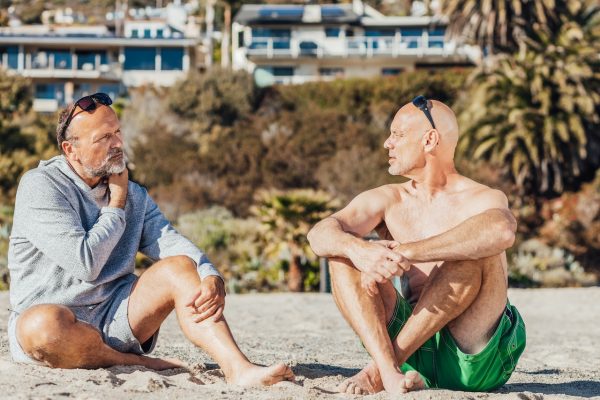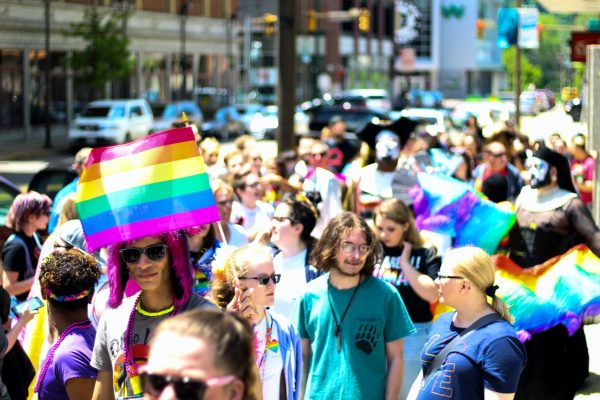Within the LGBTQ+ Community, there are a lot of subcommunities or subcultures. One of these is the Bear Community. Other communities that might be considered subcommunities include BDSM, Drag, and Leather. It should be noted that I talk about this as a community, but some may claim this as their identity. You may have noticed I did the same with a lot of my posts, such as lesbian, gay, bisexual, transgender, and queer.
A bear is a gay or bisexual man who has facial/body hair and a cuddly body. It is also used as an umbrella term that often defines more of an attitude or sense of comfort with natural masculinity and bodies.
History
According to the Association for LGBT Issues in Counseling of Alabama,
“The self-identification of gay men as Bears originated in San Francisco in the 1980s as an outgrowth of gay biker clubs like the Rainbow Motorcycle Club, and then later the leather and “girth and mirth” communities. It was created by men who felt that mainstream gay culture was unwelcoming to men who did not fit a particular “twink” body norm (hairless and young). Also, many gay men in rural America never identified with the stereotypical urban gay lifestyle, and went searching for an alternative that more closely resembled the idealized blue collar American male image.”
Many people also correlate the origins of the Bear Community with the Hanky Code, “a system for communicating sexual desires and inclinations by wearing a specially colored handkerchief in the back pocket” (quoted from Wright, 1997a). You can learn more about that here.
But that’s not where it ends. Within the Bear Community, there are other words to describe members:
Bulls & muscle bulls: a man with a minimal amount of body hair, with far greater muscle-mass than body fat. A hairless bear or hairless muscle bear. Beefier and more muscular than a shark.
Cub: A typically more submissive, youthful bear. Cubs most often become bears as they age. Or a member of the bear community with a personality and behavior characterized by youthfulness and submissiveness. Not a direct reference to age.
Chaser: a man who is sexually attracted to bears, but does not identify as a bear. This person does not possess the physical qualities typically associated with bears.
Daddy: A typically dominant, mature, older bear. Or a member of the bear community who has a more mature and dominant energy and personality. Not a direct reference to age. Or an actual father/daddy that a bear finds attractive.
Dolphin: A slender, athletic, hairless bear.
Otter: A slender, hairy member of the bear community with a passive personality.
Shark: A fit athletic, hairless bear. Beefier and more muscular than a dolphin, but not as beefy or muscular as a bull.
Twink: A term used to describe a young or young-looking man with little or no facial or body hair. This man typically maintains a very thin physique and is most often younger than 30 years old. A twink that is attracted to bears is called a chaser.
Wolf: An aggressive, more dominant, and slender hairy bear.
While the Bear Community is mostly associated with gay men, a Goldilocks is a woman who enjoys hanging out primarily with bears.
The Bear Community and Body Image
If you’ve read my blog, you know I love talking about the intersection of queer identities and body image. Because we live in a fatphobic society with certain ideas of what is considered attractive, it is interesting to look at how the Bear Community is affected by this.
A study was done just last year by Shaun E. Edmonds and Susan G. Zieff and here are some of the facts mentioned in the study surrounding this intersection:
-
While various research indicates that gay men are at higher risk for eating disorders and poor body image (Boisvert & Harrell, 2009; Drummond, 2005), Bears report greater levels of size acceptance and self-confidence (Gough & Flanders, 2009). Participation in the Bear community appears to provide some resilience to stigma, but the protection is sometimes uneven and reactive. In a poll of the New York City Bear community, disordered eating ranked as the number one health concern for Bears (Mass, 2001).
-
Obese gay males face a compounding system of stigma in that similar negativevalue judgments are placed on them for both being obese and for sexual minoritystatus. For example, sexual minority men and obese individuals are perceived asfeminized and weak (Crandall, et al., 2001; Pope, et al., 2000).
-
Besides the devaluing of the larger body size, some participants also boughtinto the negative social attributes of “lazy” and “weak” assigned to obese individu-als.
-
The re-articulation of the Bear body against discourses that are often healthist,fatphobic, and impose unrealistic notions of physical beauty may be one key tothe resilience and self-esteem achieved with in the Bear community.
-
As Bears negotiate the social, psychological, and physiological challenges associated with larger size, they exist in a community that not only embraces size-acceptance but sexually fetishizes larger body sizes.
-
The complexity of Bear experiences must be taken into consideration by public health practitioners and social researchers alike in addressing social justice issues around stigma and physical activity.
Sources:
Edmonds, S. E., & Zieff, S. G. (2015). Bearing Bodies: Physical Activity, Obesity Stigma, and Sexuality in the Bear Community. Sociology Of Sport Journal, 32(4), 415-435.
“Bears” http://www.algbtical.org/2A%20BEARS.htm
Originally posted on: https://coloritqueer.com






